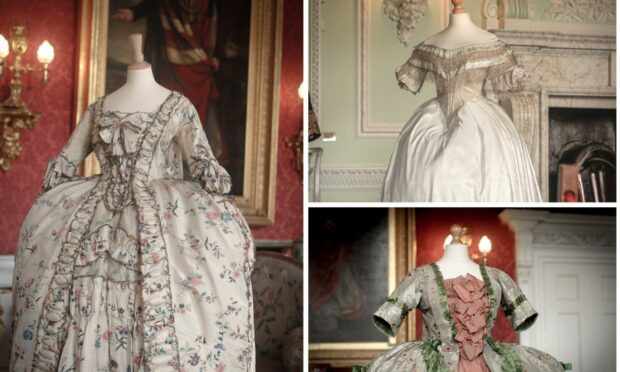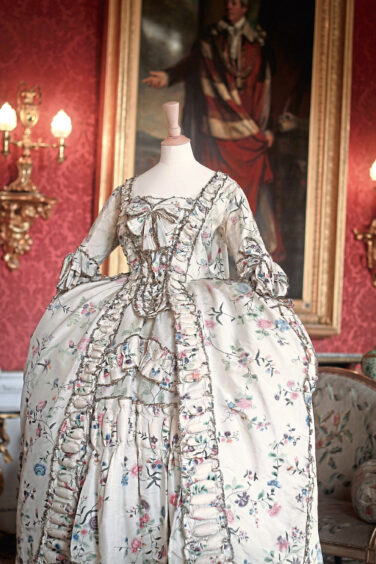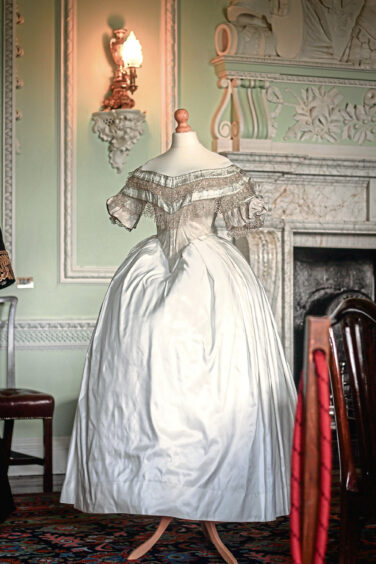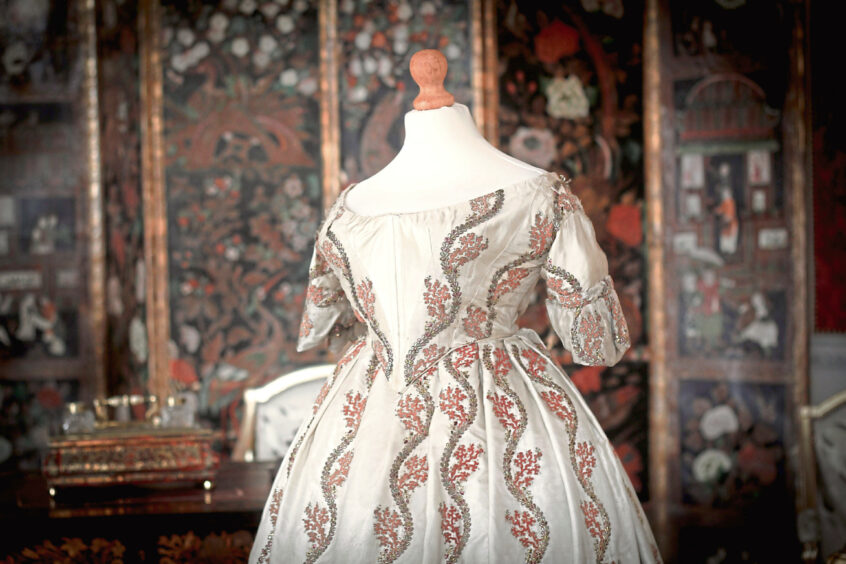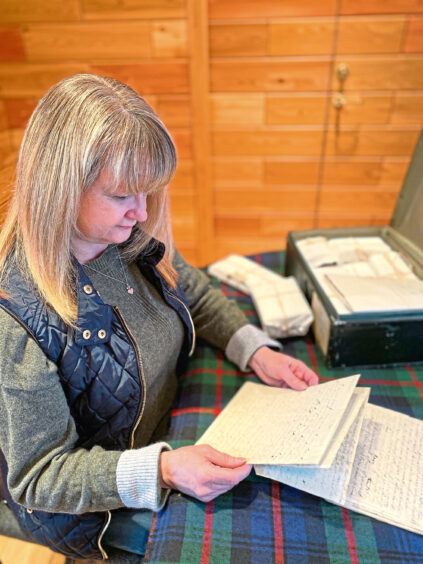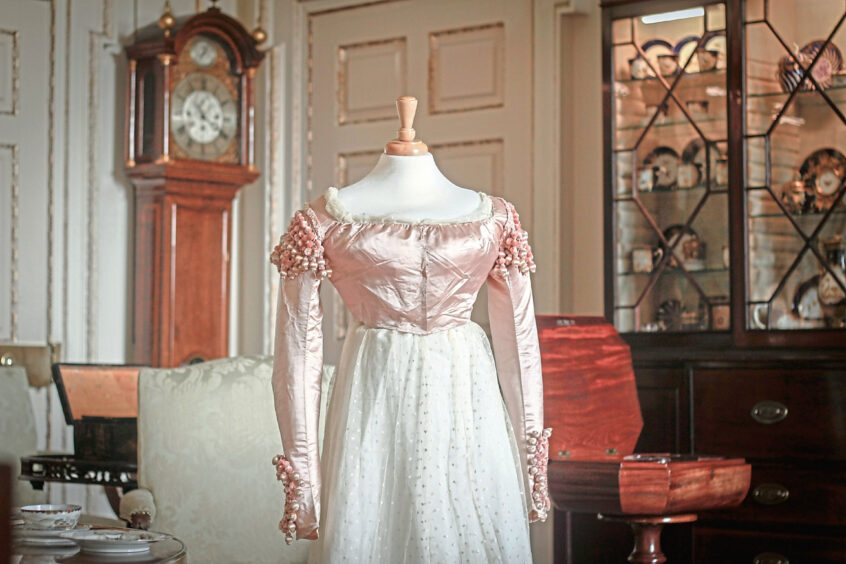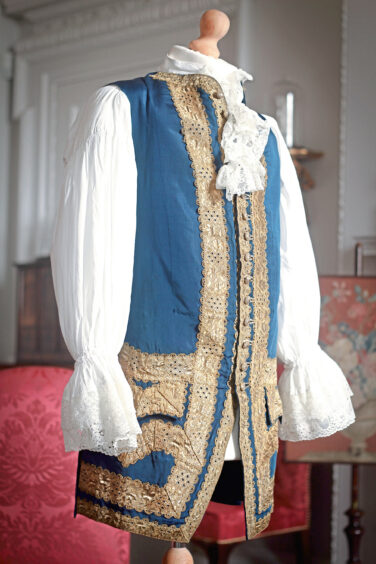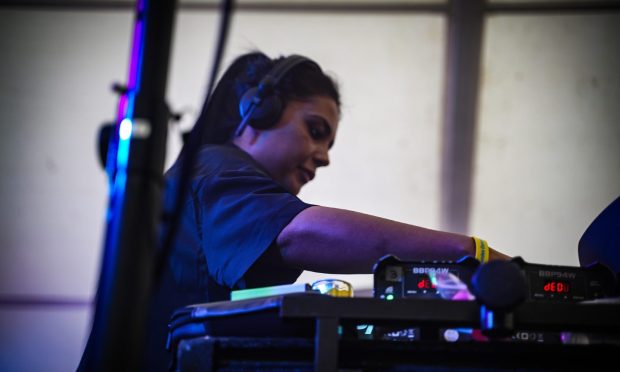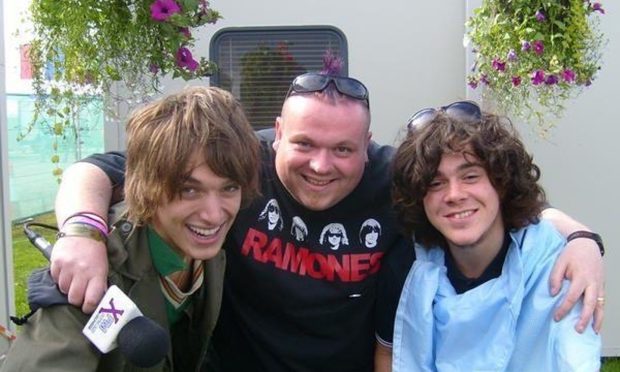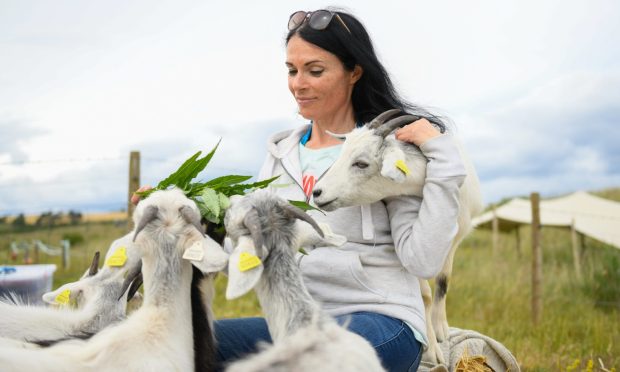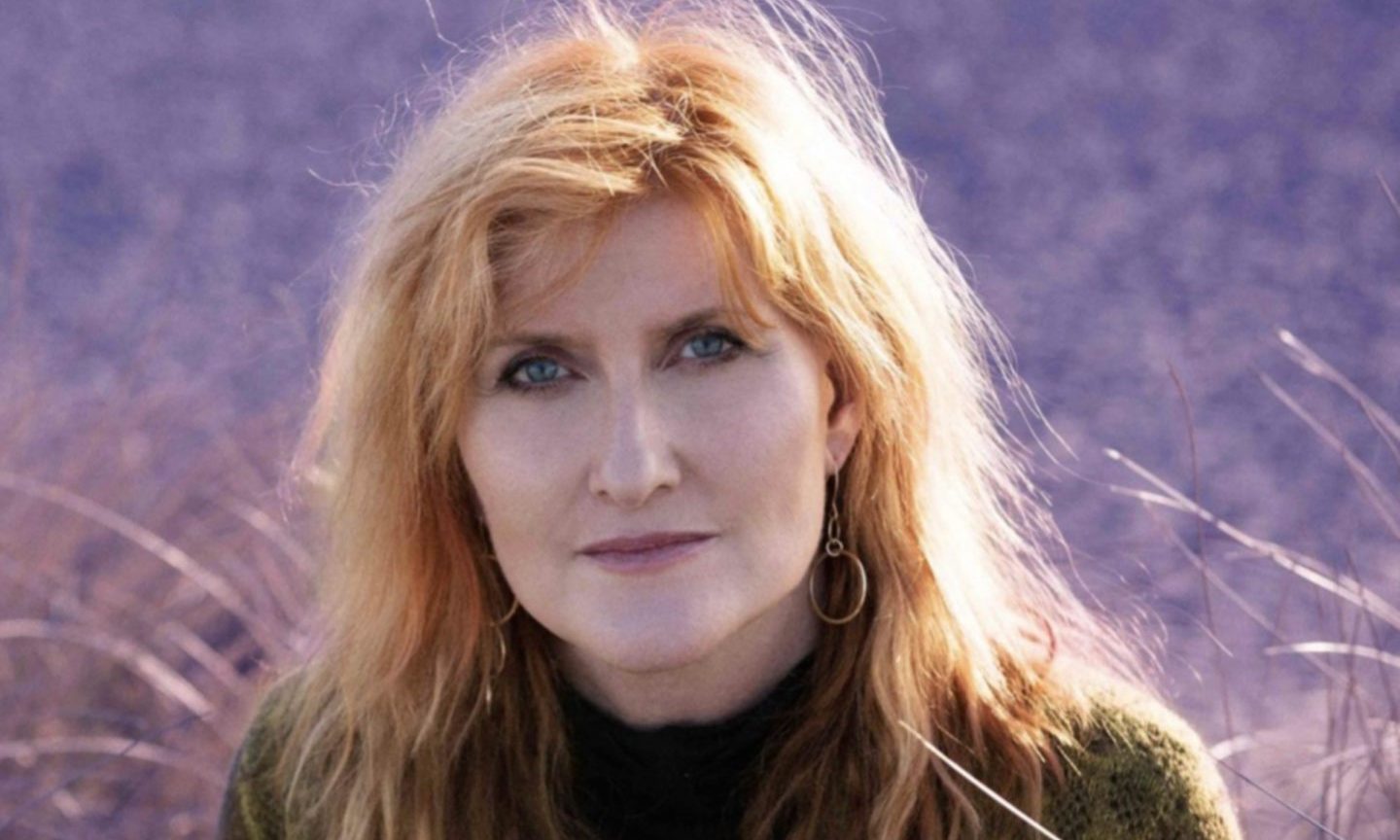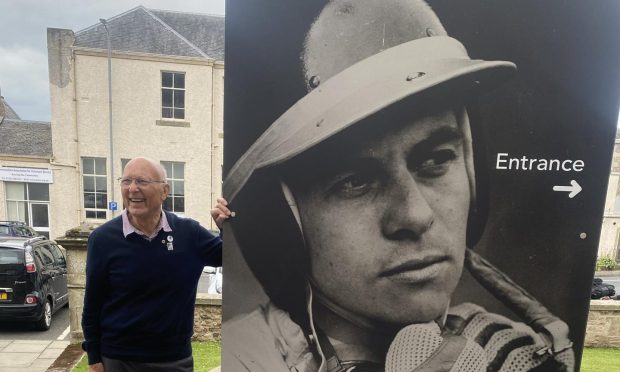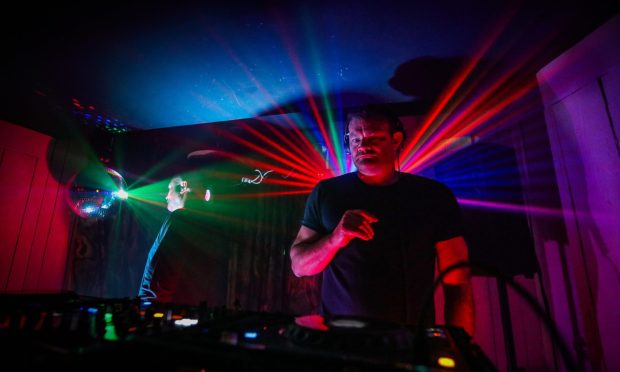A new exhibition, Castle Couture, just opened at Blair Castle.
It boasts some stunning, flamboyant and historic items including a rare Jacobite dress, as Gayle Ritchie discovers.
A ballgown worn to entertain Queen Victoria, a ‘tea’ dress that would have graced British high society, men’s frock coats, fashion-conscious waistcoats, and ornate military-style children’s clothes all grace Blair Castle’s latest exhibition.
But taking centre stage at Castle Couture, which opened yesterday, is a rare 18th Century dress, worn during Scotland’s Jacobite times.
A stunning 260-year-old gown, made of hand-painted ivory Chinese silk edged with gold thread brocade, ruffles and pleats, it lay undiscovered in an old trunk that was simply listed as “with clothes” in the castle archives until plans for the exhibition were first hatched two years ago.
What makes the discovery all the more remarkable is that the dress is complete with stomacher, the V-shaped front panel, and is virtually unaltered since the 18th Century.
It would have been worn by Jean, 2nd Duchess of Atholl, quite possibly when she attended Balls at Court, which were extravagant affairs.
The Jacobite dress was sent to specialists at Hopetoun House on the outskirts of Edinburgh to carry out repairs and ensure it was preserved properly.
It is only one of several historically significant outfits that will now go on show for the first time.
Dating back to the 18th and 19th Centuries, from the Jacobites through to the Victorian era, one gown worn for the Eglinton Tournament, a re-enactment of a medieval joust, in 1839 is even made from fabric that can be traced back to 17th-Century France.
Made from silk taffeta, silk brocade, satin, velvet and tulle and richly decorated with embroidery, ribbons and gold and silver thread, the outfits on show reveal the fashions worn at the castle during turbulent times.
The fabric of the ballgowns is typically patterned with images from nature and include floral designs and garlands of leaves, with the silk brocade of a court dress worn by Lady Charlotte, the wife of John, 3rd Duke of Atholl, which was believed to have been designed by the 18th Century’s most prominent textile designer, Anna Maria Garthwaite.
Garthwaite’s work is now on display at V&A Dundee.
Another dress is decorated with thousands of shimmering beetle-wings (or elytra) to catch the light in much the same way that sequins do on modern clothing.
The styles represent the extravagance and flamboyance of George II’s court, often copied from the French, through to Victorian opulence.
They also reveal what many women would suffer in the name of fashion, when tiny, pinched waists were de rigueur, achieved with V-shaped bodices with boned seams above full skirts.
Keren Guthrie, the archivist at Blair Castle says she found pulling together the exhibition to be a fascinating journey.
“While we knew of some items in the archives, opening up long forgotten trunks to find such treasures as the Chinese silk dress was incredibly exciting,” she says.
“Fans of Outlander will recognise the style as being something that the main character Claire Randall would have worn.
“Aristocratic families showed their wealth and status by following the fashions of royalty and the Dukes and Duchesses of Atholl in the 18th and 19th Centuries were no different.
“The exhibition is a display of how they presented themselves in society through the fashions of the day.
“From the beetle-wings of one dress to the ivory silk taffeta shot with silver and gold thread of another ballgown, you can imagine how the duchesses would have sparkled in the candlelight as they glided across the dancefloor.”
Sally Tuckett, a senior lecturer in dress and textile at the University of Glasgow, who advised on the project, says historical items of clothing gives us an immediate and physical gateway to the past.
“They let us think about the person who wore it, what their daily life was like, and the places they might have been,” she says.
“Surviving garments allow us to consider the past from the perspective of the people that lived it.
“The clothes and textiles at Blair Castle are particularly special because they are intimately linked to the history of the castle itself, and to the Dukes and Duchesses of Atholl and their families.
“The elaborate and sumptuous gowns, jackets, waistcoats and children’s clothing, give a glimpse into the life of this family – from what they wore on special occasions to how clothing was handed down and adapted through the years.”
Sally says the “stand-out garment” in the collection is the painted silk gown which dates from the mid to late 18th Century.
“It’s an item which was a joy to unpack from its box! Such dresses don’t always survive intact.
“The fabric of the petticoat, for example, might get remade into something else, or the stomacher is often lost.
“This dress, however, still has its original pieces and although it does have some signs of wear, it is in great condition!”
The fabric of the dress also allows us to make wider connections, says Sally.
“The painted silk was possibly made in China for the European market and so to think of this fabric travelling thousands of miles to end up in Blair Castle is quite special.
“Whether it survived accidentally or was kept on purpose, it offers a perfect snapshot into a particular time and place.”
The Castle Couture exhibition opened on April 1 and is included as part of the Blair Castle entrance ticket. It runs until October 31.
It’s an item which was a joy to unpack from its box! Such dresses don’t always survive intact.”
Sally Tuckett
Situated in the heart of Atholl Estates, Blair Castle was built in 1269 and today is the ancestral home of the Dukes of Atholl. Set against the magnificent landscape of 145,000-acres, the estate offers beautifully scenic vistas of rolling farmland and wild open hills across Perthshire.
- For more details see atholl-estates.co.uk
